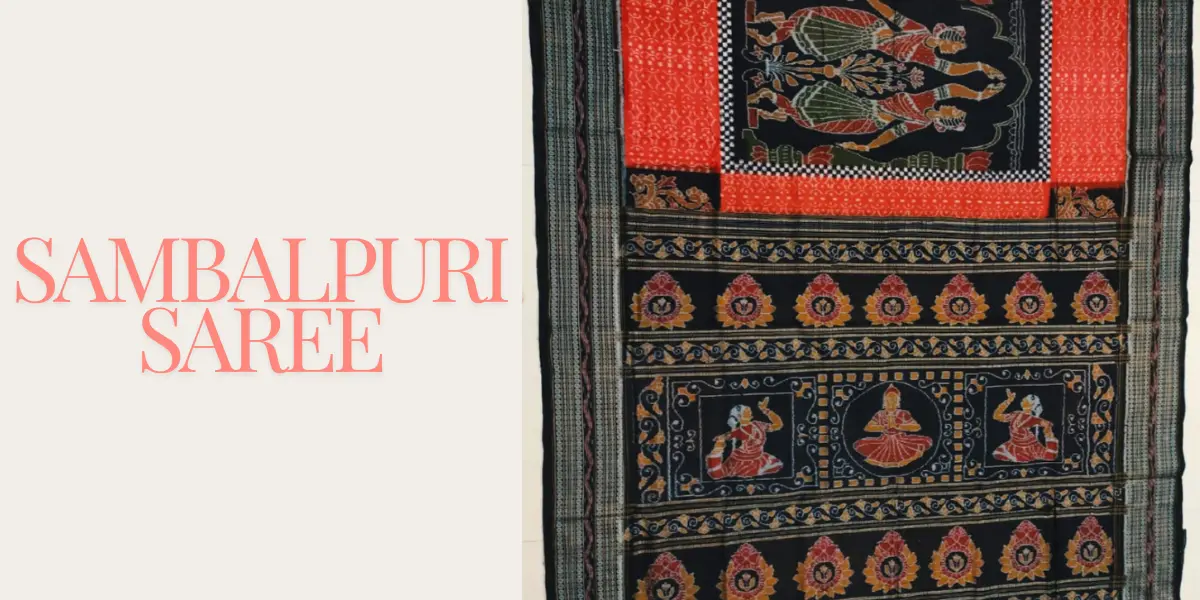Sambalpuri sarees, originating from the western part of Odisha, India, are not just garments but a testament to the rich cultural heritage and impeccable craftsmanship of the region. These sarees, known for their intricate designs and vibrant colors, have garnered admiration worldwide. In this article, we delve into the history, craftsmanship, varieties, and contemporary relevance of Sambalpuri saree, highlighting why they remain a cherished piece in every woman’s wardrobe.
History and Origin of Sambalpuri Saree
The Sambalpuri saree traces its roots back to ancient times, with a history that intertwines with the cultural and spiritual fabric of Odisha. Historically, these sarees were woven by the Bhulia community, who migrated from Northern India during the 12th century. Over the centuries, the art form evolved, incorporating influences from local traditions and customs, leading to the unique and distinguished identity that Sambalpuri sarees hold today.
Craftsmanship: The Heart of Sambalpuri Saree
The Ikat Technique
At the core of the Sambalpuri saree is the traditional Ikat dyeing technique, known as “Bandhakala” locally. This intricate process involves tying and dyeing the threads before they are woven into the fabric, creating patterns that are precise and harmonious. The process is labor-intensive, often taking weeks to months to complete a single saree, reflecting the dedication and skill of the weavers.
Materials and Tools
Sambalpuri sarees are typically woven from pure cotton or silk. The choice of material not only affects the texture and drape of the saree but also its aesthetic appeal. Traditional tools like the pit loom and shuttle are employed, ensuring that the weaving process remains authentic and true to its roots.
Designs and Motifs
The designs on Sambalpuri sarees are inspired by nature, mythology, and everyday life. Common motifs include flowers, animals, wheels (representing the chariot wheel of the Sun God), and geometrical patterns. These motifs are not just decorative but carry symbolic meanings, often representing prosperity, fertility, and divine blessings.
Varieties of Sambalpuri Sarees
Sonepuri Saree
Known for their golden hue and intricate border designs, Sonepuri sarees are a prized possession. The borders and pallu are usually adorned with elaborate patterns, making them perfect for festive and ceremonial occasions.
Pasapali Saree
Pasapali sarees derive their name from the traditional board game ‘Pasa’ (similar to chess). The saree features a distinctive checkered pattern, often in contrasting colors, symbolizing the game’s board. These sarees are admired for their striking appearance and bold designs.
Bomkai Saree
A fusion of tribal art and traditional weaving, Bomkai sarees are known for their contrasting color palettes and exquisite threadwork. These sarees often feature embroidered borders and pallu, adding to their elegance and richness.
Barpali Saree
Barpali sarees are renowned for their simplistic yet elegant designs. The focus is often on subtle patterns and minimalistic motifs, making them suitable for both casual and formal wear.
Cultural Significance of Sambalpuri Saree
Sambalpuri sarees are more than just attire; they are a symbol of Odisha’s cultural identity. These sarees play a crucial role in festivals, rituals, and ceremonies, often passed down through generations as heirlooms. Wearing a Sambalpuri saree is considered auspicious, believed to bring good fortune and blessings.
The Contemporary Relevance of Sambalpuri Saree
Global Appeal
In recent years, Sambalpuri sarees have gained international recognition, thanks to their unique designs and sustainable craftsmanship. Fashion enthusiasts and designers worldwide have embraced these sarees, incorporating them into contemporary fashion while preserving their traditional essence.
Sustainable Fashion
With growing awareness about sustainable and ethical fashion, Sambalpuri sarees have emerged as a preferred choice for eco-conscious consumers. The natural dyeing processes and handwoven techniques ensure minimal environmental impact, promoting a sustainable lifestyle.
Celebrity Endorsement
Many celebrities and influencers have been spotted donning Sambalpuri sarees, further propelling their popularity. Their endorsements have played a significant role in bringing this traditional art form to the forefront of modern fashion.
How to Style a Sambalpuri Saree
Styling a Sambalpuri saree offers endless possibilities, allowing you to experiment with traditional and modern looks.
Traditional Elegance
For a classic look, pair your Sambalpuri saree with traditional jewelry like temple jewelry or silver filigree pieces. A neatly pleated pallu and a bun adorned with fresh flowers can enhance the traditional appeal.
Contemporary Chic
To create a modern ensemble, drape your saree in innovative styles like the butterfly or pant-style drape. Pair it with a stylish blouse, statement jewelry, and contemporary accessories to make a bold fashion statement.
Accessorizing Right
Choosing the right accessories is crucial to complement your Sambalpuri saree. Opt for handcrafted jewelry, potli bags, and embroidered footwear to complete your look.
Caring for Your Sambalpuri Saree
To maintain the beauty and longevity of your Sambalpuri saree, follow these care tips:
- Dry Clean Only: Due to the delicate nature of the fabric and dye, it is recommended to dry clean Sambalpuri sarees.
- Store Properly: Keep the saree in a cool, dry place, preferably wrapped in a muslin cloth, to avoid any damage.
- Avoid Direct Sunlight: Prolonged exposure to direct sunlight can fade the vibrant colors of your saree.
Conclusion
Sambalpuri sarees are a celebration of India’s rich textile heritage and exceptional craftsmanship. Whether for festive occasions or everyday elegance, these sarees offer a unique blend of tradition and style, making them a timeless addition to any wardrobe.
